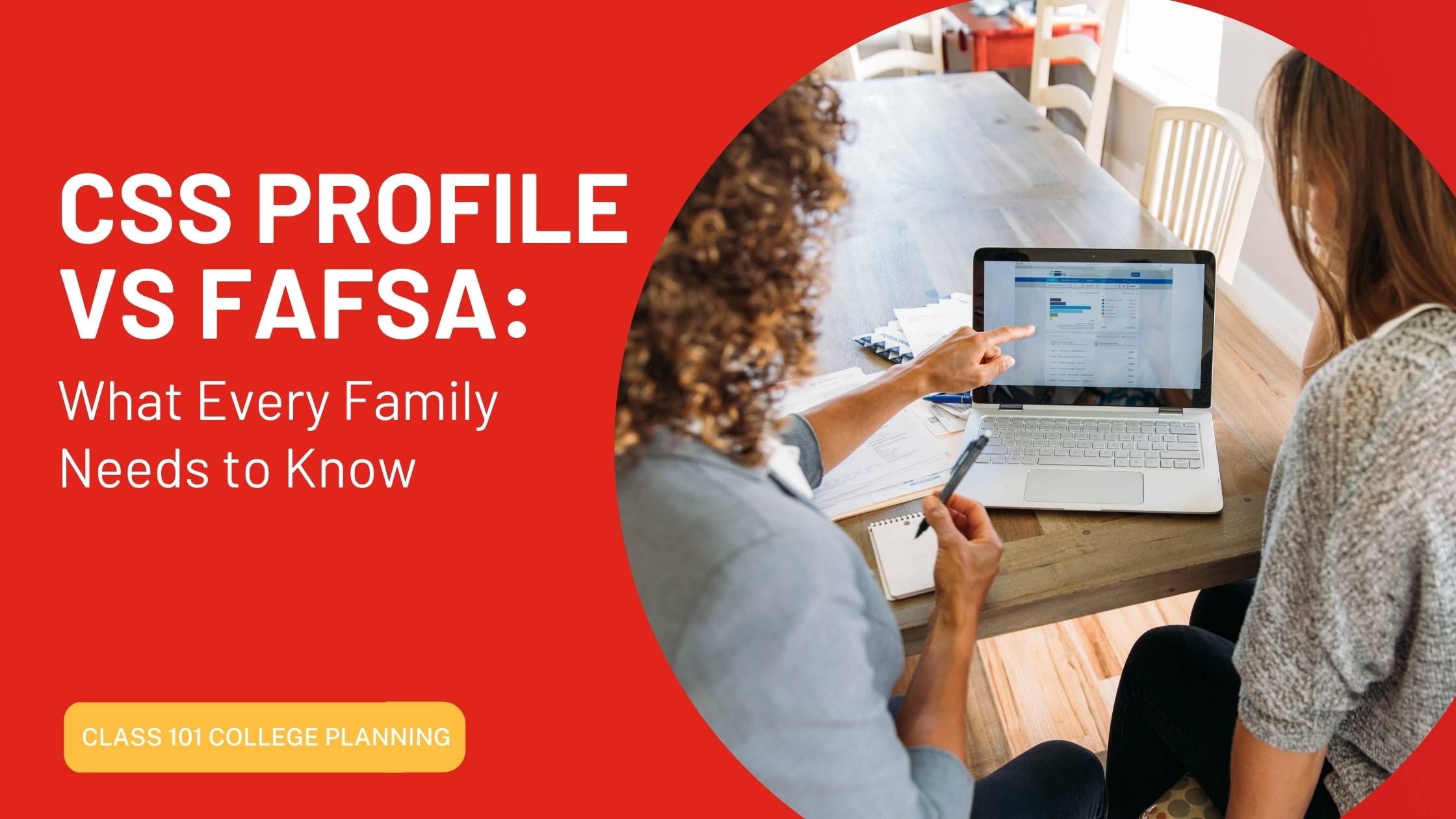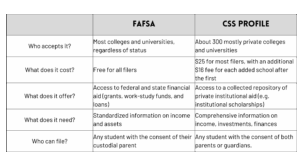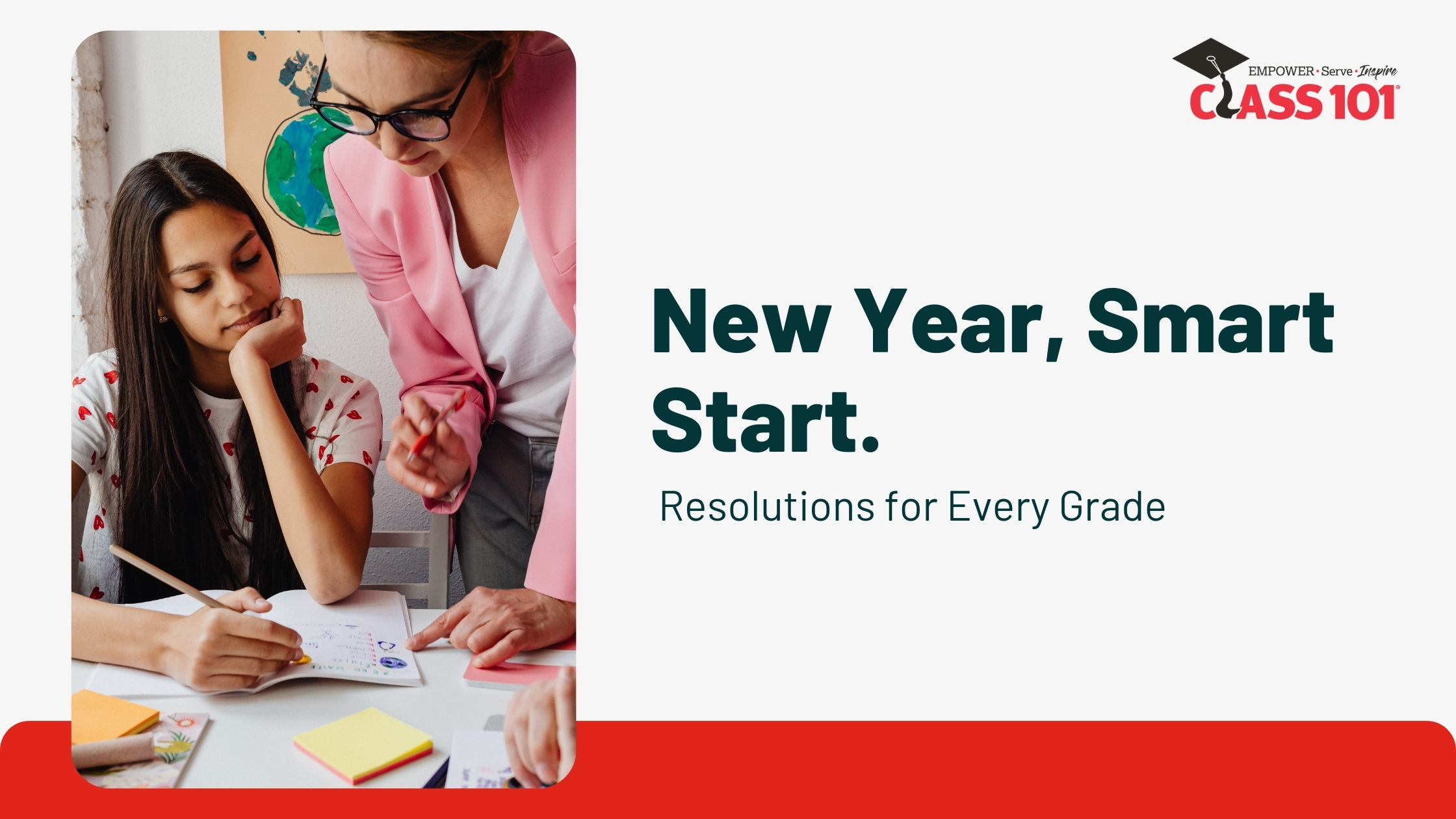September 22, 2025

Between tuition, books, meal plans, and dorm rooms, college can be an expensive proposition. On average, students pay $38,270 for college. That number can raise up to $58,628 per academic year for students attending private universities.
Given these expenses, it’s no wonder that families look for every opportunity to cut costs. In this blog, we’ll look at two invaluable resources for getting college aid: the FAFSA and CSS Profile. We’ll help families understand what they are, how they differ, and what to expect from each platform.
The FAFSA® is the common name for the Free Application for Federal Student Aid. It is a form created by the US Department of Education to connect students with student aid that can help them pay for college. Students who complete the FAFSA may be connected to federal grants, work-study funds, and loans.The FAFSA operates according to need, meaning that it offers students aid relative to what they and their families can provide. Most families will fill out a form containing 36 questions asking about their income, background, and needs. Once complete, students will be informed what aid they can expect.
Since its launch in 1967, the FAFSA has been the largest provider of financial aid for college. It is free to file and used by most public and private colleges. Students can begin filling out their FAFSA as early as October.
The CSS Profile is a separate financial aid application form created by the College Board, the nonprofit organization best known for offering the SAT and AP Exams. It relies on the organization’s registry of scholarship programs and other financial support for students.
Styled as a “one-stop shop” for students to apply for financial aid provided by various private colleges, universities, and scholarship programs, the CSS Profile seeks to limit the number of times a student may have to provide the same information to different non-governmental institutions that offer aid, instead centralizing the process into one form.
The CSS will ask students for information on family income, benefits, assets and other information. This, in turn, allows the CSS to provide students and institutions with a better sense of their overall eligibility for various programs. It is often more detailed than the FAFSA. It is accepted by a select number of (mostly private) colleges and universities.
As noted in our previous blog, the CSS Profile costs $25 for the initial application and $16 for each additional school. However, these fees can be waived for some students based on their financial circumstances. Per the College Board, over 40% of all students qualify to submit the CSS for free.
As you might have noticed from the descriptions above, there are a few key differences between the FAFSA and CSS Profile. The FAFSA is accepted by almost all schools, the CSS Profile is accepted by select, mostly private colleges. While the FAFSA is free, the CSS Profile has an initial $25 fee and costs $16 for each additional school you apply to after the first. Though FAFSA connects students with federal aid, the CSS is reserved for largely private, institutions.
There are also differences in terms of the information it requests. While the FAFSA has simplified down to 36 questions and looks at standardized income and assets, the CSS digs into deeper sources of wealth (such as retirement accounts and home equity). This can make it more thorough.
There is also a slight difference in who can file. FAFSA requires custodial parent consent only, but CSS requires both parents or guardians to consent.

Virtually all students file for financial aid through the FAFSA as it offers the largest collection of available financial aid from the US government. However, many students file for both, particularly those applying to private colleges. For these filers, the $25 application fee is insignificant relative to the aid that the CSS Profile can potentially connect them to. Some private colleges may, additionally, require students to complete a CSS Profile.
Before you apply to any college or university, you should always check their financial aid website to understand what their requirements are and what they accept. Students should not, for example, complete the CSS Profile if they are not applying to any colleges that accept it.
Regardless of what path you take to seek aid, the path remains the same. Students and their families should always try to start early and remain cognizant of deadlines. Missed deadlines can mean fewer opportunities for aid.
They also should try to have as many financial documents available as possible to ensure that they can answer the questions offered by the forms. They should also double-check what each school they want to apply to offers and what they accept.
If you feel overwhelmed by the FAFSA or CSS Profile, remember there is always professional help. Organizations like Class 101 are available to guide you through the process.
***
The FAFSA and CSS Profile are both tools to connect students and families with financial aid. By understanding what each platform offers, students can maximize their opportunities to cut costs and make college affordable.
To ensure you get one-on-one guidance to complete your FAFSA and CSS Profile on time, contact Class 101 today.

December 8, 2025
The end of the year is upon us. Aside from holly jolly celebrations and reflections on the year before, this time is a great chance for renewal. It is a chance to start fresh and set new routines, New Year’s resolutions, that can set students up for success when they apply for college. These resolutions […]
Read More >
October 10, 2025
Senioritis. The senior slump. Slacking disease. There are many names for it, but it’s a tendency almost everyone is familiar with: As students approach the end of their high school career, they feel a decreased sense of motivation. Their grades slide. They stop participating in extracurriculars. It’s an understandable tendency. After months, if not years, […]
Read More >
August 25, 2025
The average student spends $38,270 per year on college expenses—a number that includes not just tuition but also books, supplies, and daily living expenses. This number is even higher for students attending school at a private school, with the average student paying some $58,628. In short, college is expensive. It is something that many families […]
Read More >